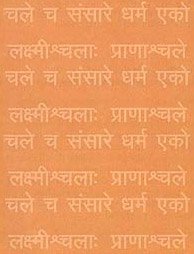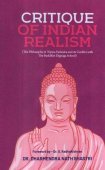Vatsyayana, Vātsyāyana: 13 definitions
Introduction:
Vatsyayana means something in Hinduism, Sanskrit. If you want to know the exact meaning, history, etymology or English translation of this term then check out the descriptions on this page. Add your comment or reference to a book if you want to contribute to this summary article.
In Hinduism
Purana and Itihasa (epic history)
Source: Cologne Digital Sanskrit Dictionaries: The Purana IndexVātsyāyana (वात्स्यायन).—Kāśyapa gotrakāras.*
- * Matsya-purāṇa 199. 6.

The Purana (पुराण, purāṇas) refers to Sanskrit literature preserving ancient India’s vast cultural history, including historical legends, religious ceremonies, various arts and sciences. The eighteen mahapuranas total over 400,000 shlokas (metrical couplets) and date to at least several centuries BCE.
Nyaya (school of philosophy)
Source: Shodhganga: A study of Nyāya-vaiśeṣika categoriesVātsyāyana (वात्स्यायन).—The first commentator of the Nyāyasūtra is Vātsyāyana and the name of his work is Nyāyabhāṣya. Vātsyāyana is also known as Pakṣilasvāmin who mentioned in his work the views of the earlier Naiyāyikas. According to S.N. Dasgupta, his date is about 4th century A.D.29 Rādhākrishnan also accepts the same date.

Nyaya (न्याय, nyaya) refers to a school of Hindu philosophy (astika), drawing its subject-matter from the Upanishads. The Nyaya philosophy is known for its theories on logic, methodology and epistemology, however, it is closely related with Vaisheshika in terms of metaphysics.
General definition (in Hinduism)
Source: WikiPedia: HinduismVātsyāyana is the name of a Hindu philosopher in the Vedic tradition who is believed to have lived around 3rd century CE in India. His name appears as the author of the Kama Sutra and of Nyāya Sutra Bhāṣya, the first commentary on Gotama's Nyāya Sutras. His name is sometimes confused with Mallanaga, the prophet of the Asuras, to whom the origin of erotic science is attributed.
Hardly anything is known about him, although it is believed that his disciples went on his instructions, on the request of the Hindu Kings in the Himalayan range to influence the hill tribals to give up the pagan cult of sacrifices. He is said to have created the legend of Tara among the hill tribes as a tantric goddess. Later as the worship spread to the east Garo hills,the goddess manifest of a 'yoni' goddess Kamakhya was created. His interest in human sexual behavior as a medium of attaining spirituality was recorded in his treatise Kama Sutra.
It is impossible to fix the exact date either of the life of Vatsyayana or of his work. It is believed that he must have lived between the 1st and 6th century AD, on the following grounds: He mentions that Satakarni Satavahana, a king of Kuntal, killed Malayevati his wife with an instrument called Katamari by striking her in the passion of love.
Languages of India and abroad
Sanskrit dictionary
Source: DDSA: The practical Sanskrit-English dictionaryVātsyāyana (वात्स्यायन).—
1) Name of the author of the Kāmasūtras (a work on erotic subjects).
2) Name of the author of a commentary on the Nyāya Sūtras.
Derivable forms: vātsyāyanaḥ (वात्स्यायनः).
Source: Cologne Digital Sanskrit Dictionaries: Shabda-Sagara Sanskrit-English DictionaryVātsyāyana (वात्स्यायन).—m.
(-naḥ) The name of a Muni. E. vātsya the father of the sage, and phak aff. of descent.
Source: Cologne Digital Sanskrit Dictionaries: Benfey Sanskrit-English DictionaryVātsyāyana (वात्स्यायन).—i. e. vātsya, patronym. of vatsa, + āyana, patronym., m. The name of a Muni, [Pañcatantra] 45, 9.
Source: Cologne Digital Sanskrit Dictionaries: Cappeller Sanskrit-English DictionaryVātsyāyana (वात्स्यायन).—[masculine] patr. from [preceding] [masculine], [Name] of an author.
Source: Cologne Digital Sanskrit Dictionaries: Aufrecht Catalogus Catalogorum1) Vātsyāyana (वात्स्यायन) as mentioned in Aufrecht’s Catalogus Catalogorum:—Kāmasūtra. Nyāyasūtrabhāṣya. +Puruṣasāmudrikalakṣaṇa. Bik. 329. He is quoted in Liṅgaviśeṣavidhi Oxf. 167^a.
2) Vātsyāyana (वात्स्यायन):—astronomer. Quoted in Malamāsatattva.
3) Vātsyāyana (वात्स्यायन):—astronomer. Quoted by Hemādri in Pariśeṣakhaṇḍa 2, 792.
4) Vātsyāyana (वात्स्यायन):—Alaṃkārasūtra. Hz. 269.
Source: Cologne Digital Sanskrit Dictionaries: Monier-Williams Sanskrit-English Dictionary1) Vātsyāyana (वात्स्यायन):—[from vātsa] m. [patronymic] of vātsya [gana] śārṅgaravādi (f(ī). , [ib.])
2) [v.s. ...] Name of various authors ([especially] of the Kāma-sūtras and of the Nyāya-bhāṣya), [Pañcatantra; Vāsavadattā, [Introduction]; Catalogue(s)]
3) [v.s. ...] mf(ī)n. relating to or composed by Vātsyāyana, [Catalogue(s)]
Source: Cologne Digital Sanskrit Dictionaries: Yates Sanskrit-English DictionaryVātsyāyana (वात्स्यायन):—(naḥ) 1. m. Name of a sage.
[Sanskrit to German]
Sanskrit, also spelled संस्कृतम् (saṃskṛtam), is an ancient language of India commonly seen as the grandmother of the Indo-European language family (even English!). Closely allied with Prakrit and Pali, Sanskrit is more exhaustive in both grammar and terms and has the most extensive collection of literature in the world, greatly surpassing its sister-languages Greek and Latin.
Kannada-English dictionary
Source: Alar: Kannada-English corpusVātsyāyana (ವಾತ್ಸ್ಯಾಯನ):—
1) [noun] name of a sage-author who wrote Kāma Śastra.
2) [noun] the treatise Kāma Śastra itself.
3) [noun] another sage-author who wrote commentary on Nyāya.
Kannada is a Dravidian language (as opposed to the Indo-European language family) mainly spoken in the southwestern region of India.
Nepali dictionary
Source: unoes: Nepali-English DictionaryVātsyāyana (वात्स्यायन):—n. 1. name of the author of the Kamasutras, erotic science; 2. name of the author of a commentary on the Nyaya sutras;
Nepali is the primary language of the Nepalese people counting almost 20 million native speakers. The country of Nepal is situated in the Himalaya mountain range to the north of India.
See also (Relevant definitions)
Starts with: Vatsyayanabhashya, Vatsyayanamukha, Vatsyayanasutra, Vatsyayanasutrasara, Vatsyayanavarttikanibandha.
Ends with: Pancakarnavatsyayana, Panchakarnavatsyayana.
Full-text (+219): Pakshila, Mandanaga, Kamasutra, Dravila, Mallanaga, Canakatmaja, Vatsyayaniya, Ghotakamukha, Carayana, Vatsyayanasutrasara, Vatsyayanasutra, Vatsyayanabhashya, Kautalya, Vatsayana, Aupanishadika, Aindrajala, Asamstuta, Auparishtaka, Vatsyayani, Kaumudipracara.
Relevant text
Search found 54 books and stories containing Vatsyayana, Vātsyāyana; (plurals include: Vatsyayanas, Vātsyāyanas). You can also click to the full overview containing English textual excerpts. Below are direct links for the most relevant articles:
Kamashastra Discourse (Life in Ancient India) (by Nidheesh Kannan B.)
6.7. Importance of Sex Education in Ancient India < [Chapter 5 - Looking for Alternatives: Possibilities in Kāmaśāstra]
1. Authorship and Date of the Kāmasūtra < [Chapter 3 - A Thematic Analysis of Vātsyāyanakāmasūtra]
2. Works on Kāmaśāstra (i): Bābhravyakārikā < [Chapter 2 - An Appraisal of Kāmaśāstra Works in Sanskrit]
Vaisesika Doctrines (in the Nyaya Works) (by Diptasree Som)
Chapter 2 - The Position of Gautama and Vatsyayana
Chapter 3 - Views of Uddyotakara, Vacaspati Misra and others
Philosophy of Charaka-samhita (by Asokan. G)
Dialectical terms (22): Quibble (chala) < [Chapter 7 - Logic and Dialectical Speculations]
Dialectical terms (2): Demonstration (sthāpanā) < [Chapter 7 - Logic and Dialectical Speculations]
Dialectical terms (14): Investigation (jijñāsā) < [Chapter 7 - Logic and Dialectical Speculations]
The validity of Anumana (inference) in Nyaya system (by Babu C. D)
Chapter 3.6 - Carvaka views on Inference
Chapter 1 - Nyaya system (Introduction)
Discovering a New World < [October – December, 1985]
Studies in Rajput Painting < [July-August, 1929]
The Tradition of the Puppet Theatre < [January 1963]
A History of Indian Philosophy Volume 1 (by Surendranath Dasgupta)
Part 2 - Nyāya and Vaiśeṣika sūtras < [Chapter VIII - The Nyāya-Vaiśeṣika Philosophy]
Part 18 - Upamāna and Sabda < [Chapter VIII - The Nyāya-Vaiśeṣika Philosophy]
Part 5 - Philosophy in the Nyāya sūtras < [Chapter VIII - The Nyāya-Vaiśeṣika Philosophy]
Related products

